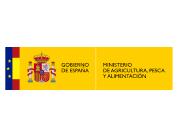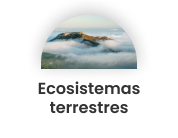
Satellites as sentinels for the detection and monitoring of invasive vegetation in the Cantabrian region (INVASAT)
MITECO
Line of action:
Terrestrial ecosystemsStatus:
FinalizadoExecution date:
2020End date:
2021Total budget:
81.075,89 €Amount of aid from the Biodiversity Foundation:
40.392,00 €The objective of the INVASAT project is to generate a database that integrates optical-spectral and biological characteristics of invasive species and, through their combination with satellite images, to develop models and tools for the early detection and systematic monitoring of these species.
The project has had a demonstrative character through the application of the methodology developed in the Protected Natural Spaces of the Cantabrian lowlands. The knowledge and tools generated are aligned with European and national biodiversity strategies and provide information for the development of adaptive management plans focused on the prevention, monitoring and control of invasive species.
The main objective of the project has been to develop tools based on satellite images for the early detection and systematic monitoring of invasive species, which contribute to the conservation of biodiversity in Protected Natural Areas of the Cantabrian lowlands.
Among its specific goals are:
- Disseminate the project and raise awareness of the impact of invasive species and the need for their management.
- To characterize the spectrum and biological features of invasive vegetation in Cantabrian habitats.
- Identify from satellite images the area of distribution of invasive vegetation.
- Develop a guide of recommendations for monitoring invasive species with satellite images and application for adaptive management.
- Development of a spectral library of invasive vegetation species in the Cantabrian lowlands.
- 3D modeling of the spectral behavior of habitats colonized by invasive species.
- Mapping and analysis of the distribution of invasive vegetation within the Protected Natural Areas of the Cantabrian lowlands.
- Proposal of guidelines and technical solutions for the detection and monitoring of invasive vegetation with satellite.
- Dissemination and communication of the project.
- Generation of a database of the optical and biological characteristics of three invasive exotic plant species(Arctotheca caléndula, Baccharis halimifolia and Cortaderia selloana) with a significant presence in the protected natural areas of the Cantabrian coast.
- Development of specific models for mapping, detection and monitoring of two species(Baccharis halimifolia and Cortaderia selloana). These models include the phenological, functional and optical characteristics characteristic of each of the two species.
- The results of the project have confirmed the existence of Cortaderia selloana in all the protected natural areas of the coast of Cantabria. However, it seems that its expansion in these protected areas is restricted since no large areas have been identified as colonized by the species. In the case of Baccharis halimifolia, the models generated have made it possible to identify the distribution pattern of the species and its extensive development in the protected areas of the ZEC Rías Occidentales and Duna de Oyambre (Cantabria) and the Urdaibai Biosphere Reserve (Basque Country).
- Development of technical guidelines to improve the monitoring of invasive alien vegetation through the interpretation of information from remote sensors (satellite images, drones, etc.).


Satellites as sentinels for the detection and monitoring of invasive vegetation in the Cantabrian region (INVASAT)









 back to search
back to search 